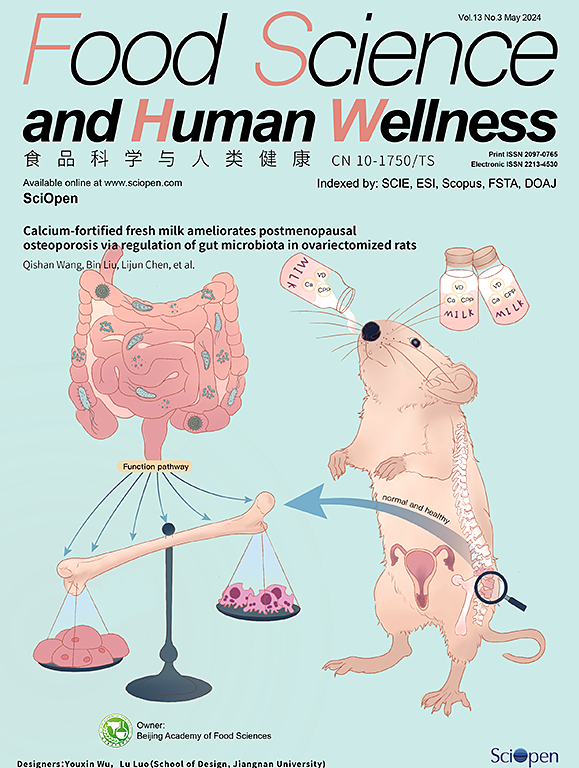Evolution of free amino acids, biogenic amines and volatile compounds in fermented sausages inoculated with Lactiplantibacillus plantarum and Staphylococcus simulans
IF 7.4
1区 农林科学
Q1 FOOD SCIENCE & TECHNOLOGY
引用次数: 0
Abstract
Lactic acid bacteria and coagulase-negative staphylococci play an important role in the production of fermented sausages, such as inhibiting the growth of undesirable bacteria and antioxidant. In this study, the effects of inoculation with different starter cultures (Lactiplantibacillus plantarum HN108 and Staphylococcus simulans NJ209) on the free amino acids (FAAs), biogenic amines (BAs) and volatile compounds of fermented sausages were investigated using an amino acid analyzer, ultra performance liquid chromatography and gas chromatography-ion mobility spectrometry, respectively. The pH and carbonyl content of the inoculated group was significantly lower than those in the control group (P < 0.05). L. plantarum HN108 significantly reduced the content of FAAs and BAs in fermented sausage production (P < 0.05), while S. simulans NJ209 promoted the formation of FAAs (especially bitter amino acids) and exhibited slight BAs-reducing activity. In addition, L. plantarum HN108 promoted the formation of volatile compounds such as ketones, alcohols and alkenes in sausages. In conclusion, L. plantarum HN108 could contribute to reducing the content of putrescine and tyramine and forming the desirable flavor compounds in fermented sausages. Thus, L. plantarum HN108 is expected to be a starter culture that can improve the safety and flavor of fermented sausages.

接种植物乳杆菌和葡萄球菌的发酵香肠中游离氨基酸、生物胺和挥发性化合物的变化
乳酸菌和凝固酶阴性葡萄球菌在发酵香肠的生产中起着重要的作用,如抑制不良细菌的生长和抗氧化剂。本研究采用氨基酸分析仪、超高效液相色谱法和气相色谱-离子迁移谱法分别研究了接种不同发酵剂(植物乳杆菌HN108和模拟葡萄球菌NJ209)对发酵香肠游离氨基酸(FAAs)、生物胺(BAs)和挥发性化合物的影响。接种组的pH和羰基含量显著低于对照组(P <;0.05)。L. plantarum HN108显著降低了发酵香肠生产中FAAs和BAs的含量(P <;S. simulans NJ209促进了FAAs(尤其是苦味氨基酸)的形成,并表现出轻微的bas还原活性。此外,L. plantarum HN108促进了香肠中酮类、醇类和烯烃等挥发性化合物的形成。综上所述,植物乳杆菌HN108有助于降低发酵香肠中腐胺和酪胺的含量,形成理想的风味化合物。因此,植物乳杆菌HN108有望成为提高发酵香肠安全性和风味的发酵剂。
本文章由计算机程序翻译,如有差异,请以英文原文为准。
求助全文
约1分钟内获得全文
求助全文
来源期刊

Food Science and Human Wellness
Agricultural and Biological Sciences-Food Science
CiteScore
8.30
自引率
5.70%
发文量
80
审稿时长
28 days
期刊介绍:
Food Science and Human Wellness is an international peer-reviewed journal that provides a forum for the dissemination of the latest scientific results in food science, nutriology, immunology and cross-field research. Articles must present information that is novel, has high impact and interest, and is of high scientific quality. By their effort, it has been developed to promote the public awareness on diet, advocate healthy diet, reduce the harm caused by unreasonable dietary habit, and directs healthy food development for food industrial producers.
 求助内容:
求助内容: 应助结果提醒方式:
应助结果提醒方式:


